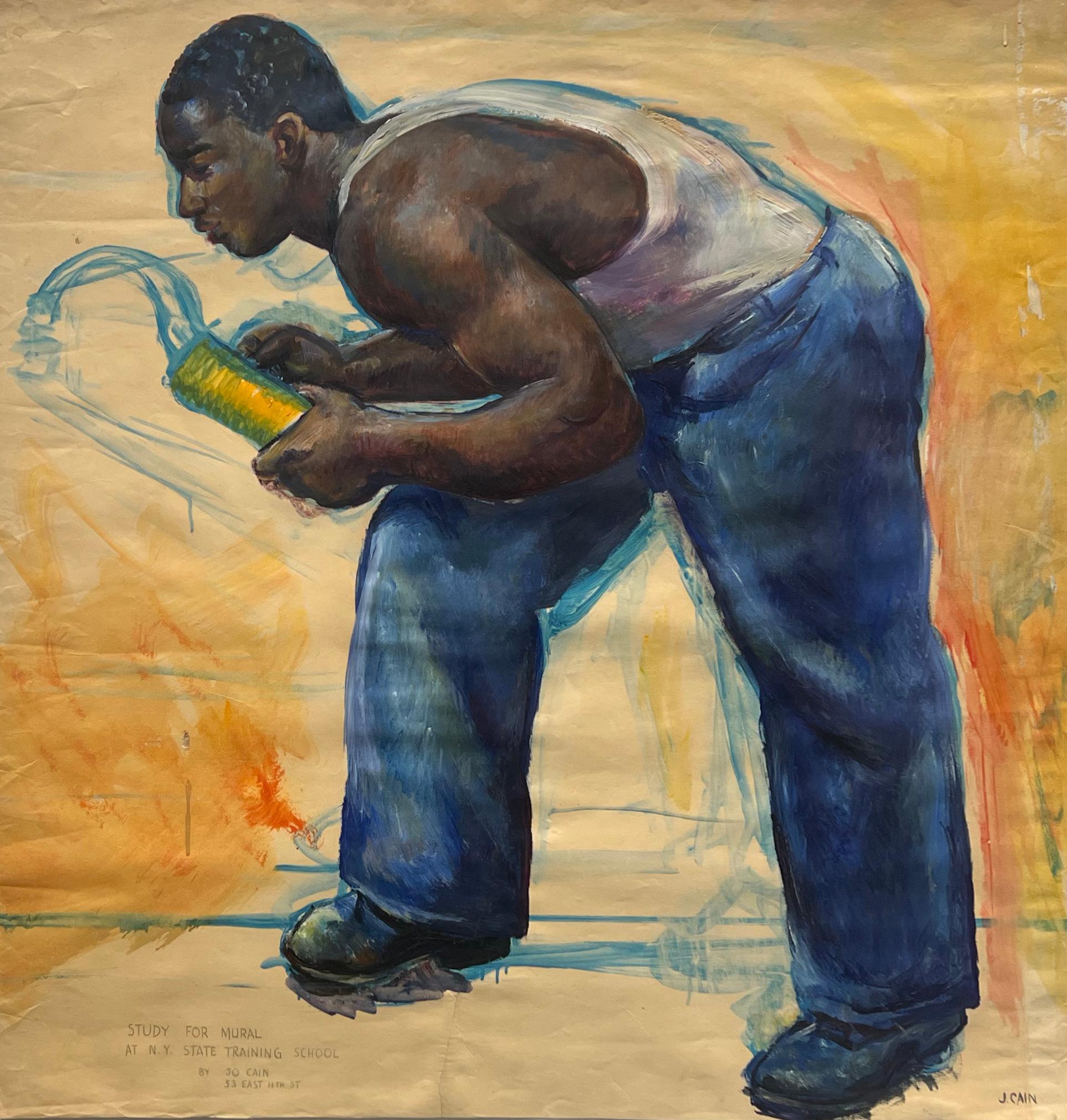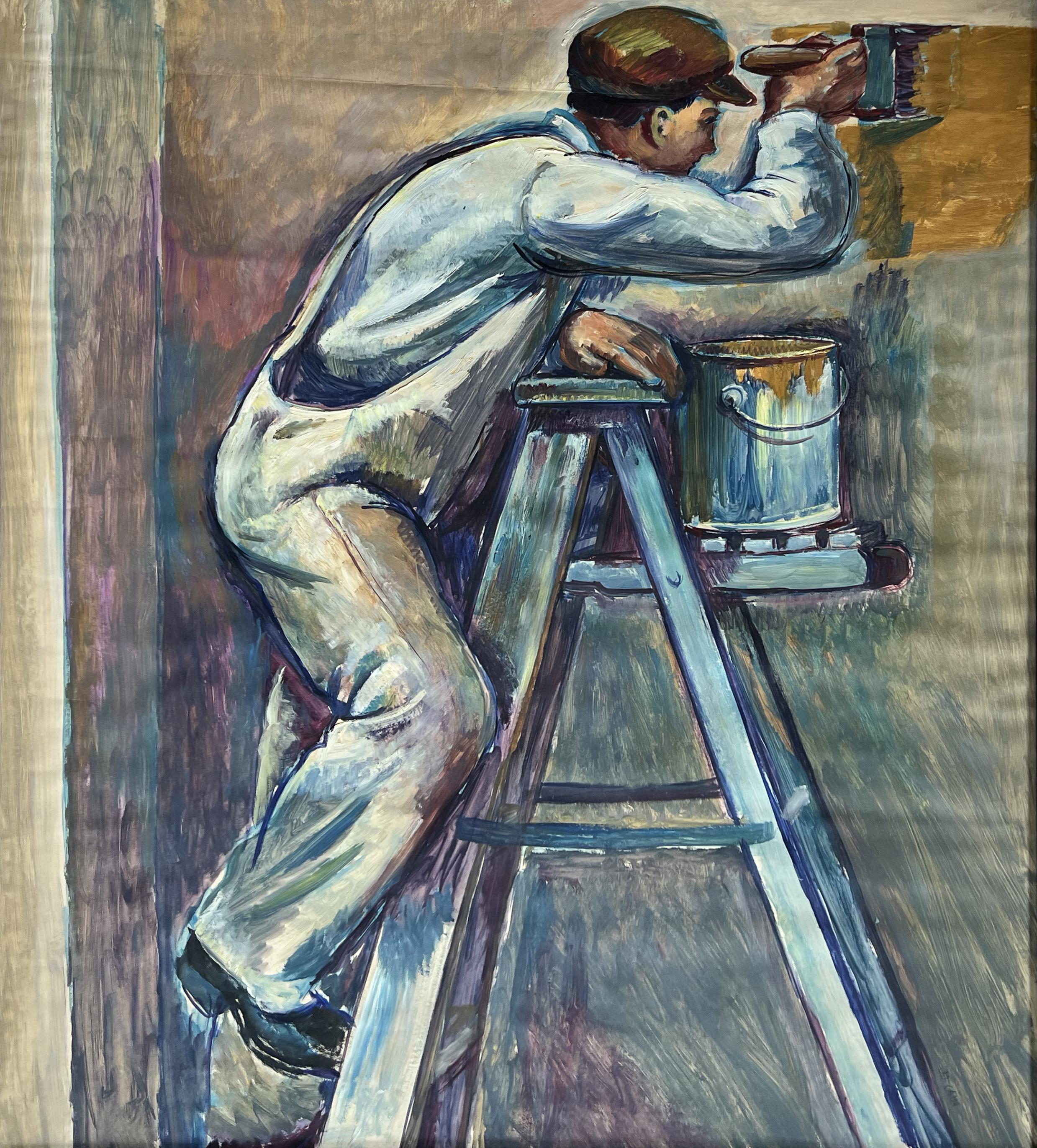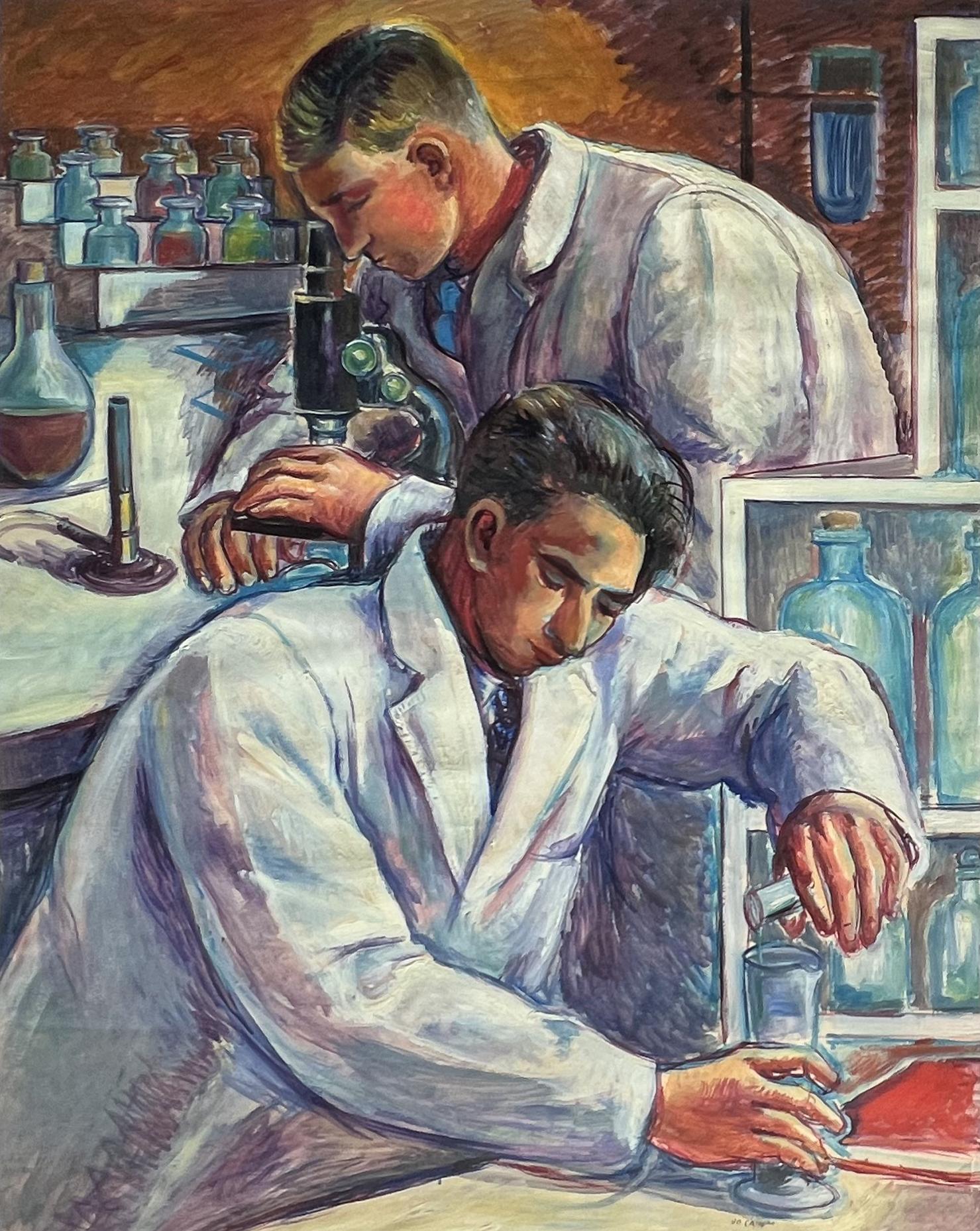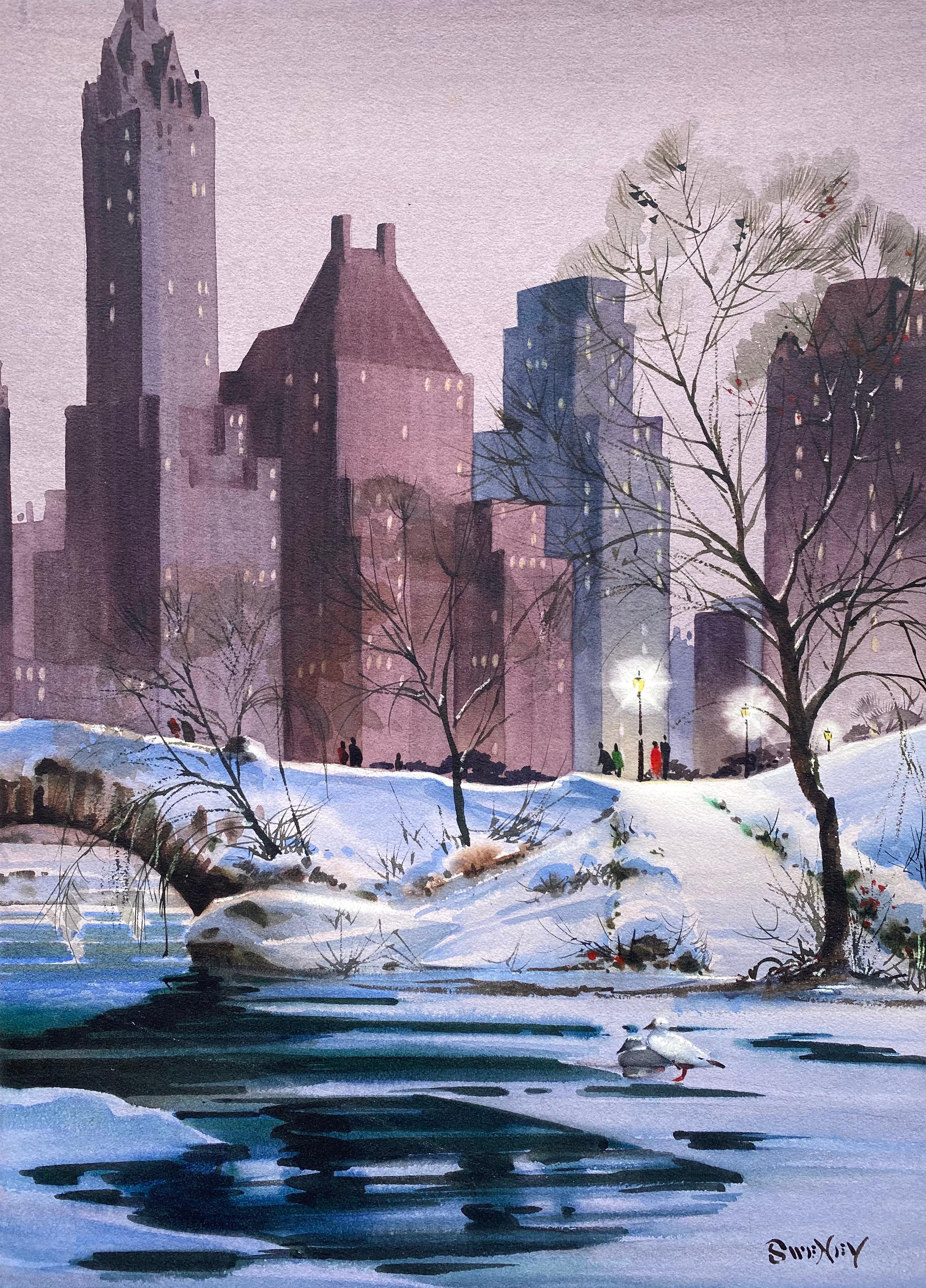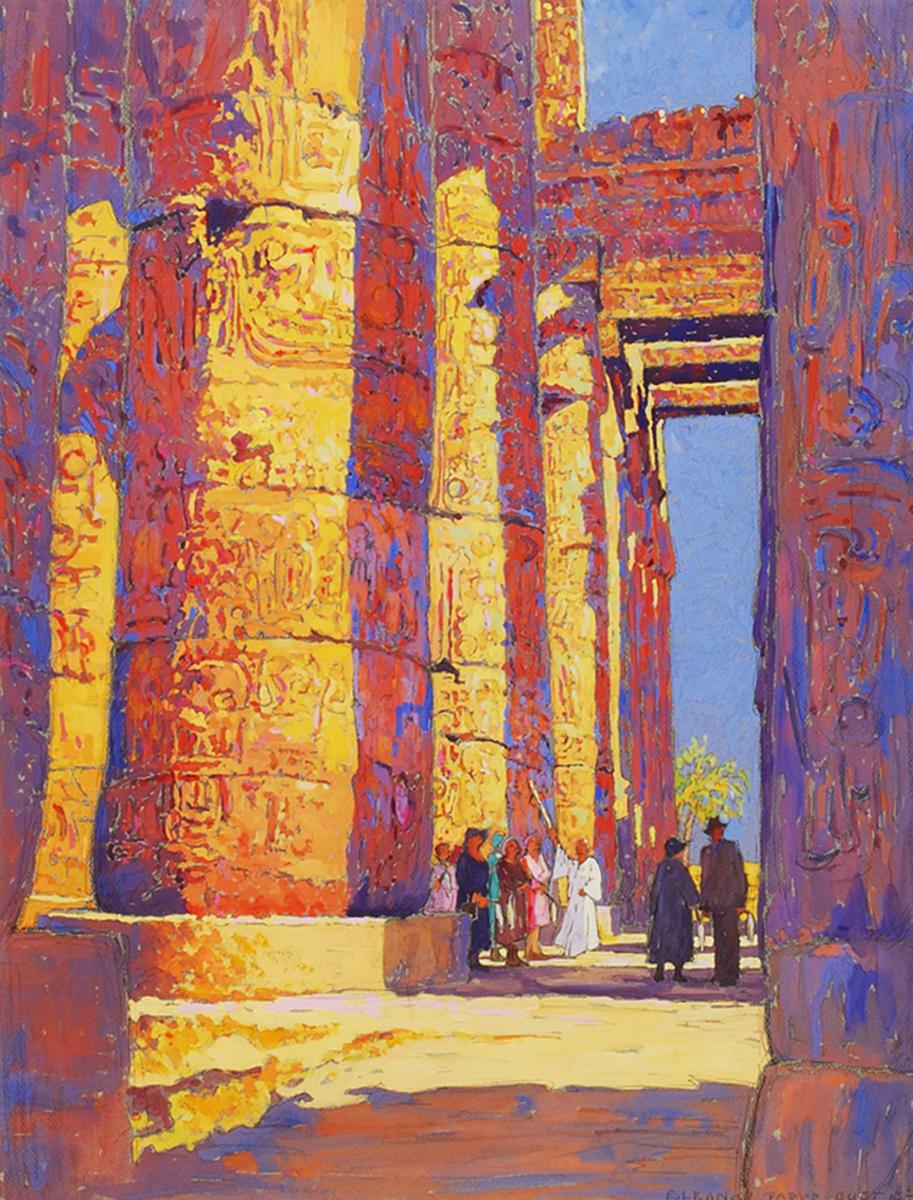Items Similar to The New Dreamliner: Biggest Baby News in Years!
Want more images or videos?
Request additional images or videos from the seller
1 of 11
John GannamThe New Dreamliner: Biggest Baby News in Years!1951
1951
About the Item
Published Thayer Stroller advertisement, 1951
Watercolor and gouache on board
Signed lower left
- Creator:John Gannam (1907 - 1965, American)
- Creation Year:1951
- Dimensions:Height: 17 in (43.18 cm)Width: 18 in (45.72 cm)
- Medium:
- Movement & Style:
- Period:
- Condition:
- Gallery Location:Miami, FL
- Reference Number:1stDibs: LU38531016033
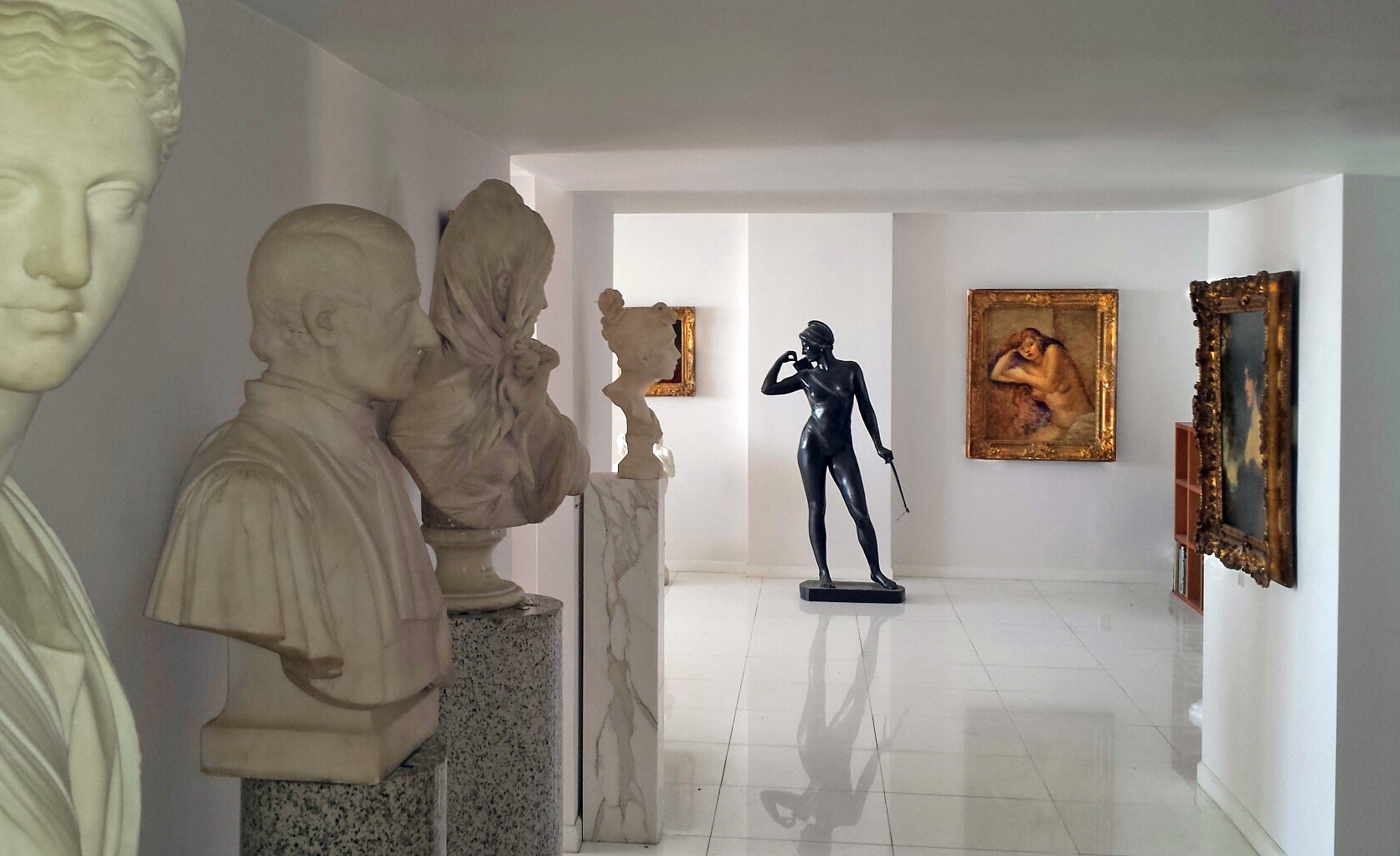
About the Seller
4.9
Gold Seller
These expertly vetted sellers are highly rated and consistently exceed customer expectations.
Established in 2005
1stDibs seller since 2016
102 sales on 1stDibs
Typical response time: 1 hour
- ShippingRetrieving quote...Ships From: Miami, FL
- Return PolicyA return for this item may be initiated within 3 days of delivery.
More From This SellerView All
- Environmental Prognostication Coil Narrative "Homo Sapiens R.I.P."Located in Miami, FL"They paved paradise and put up a parking lot," Joni Mitchell said. - - Created in 1969, at the dawn of the American environmental movement, artist Richard Erdoes draws a sequential narrative in the form of a coil. From inception to destruction, it illustrates a list of things that humans are doing to destroy the world we live in. The work was commissioned for school-age humans and executed in a whimsically comic way. Yet the underlying narrative is sophisticated and foreshadows a world that could be on the brink of ecological disaster. Graphically and conceptually, this work exhibits an endless amount of creativity and Erdoes cartoony style is one to fall in love with. Signed lower right. Unframed 12.4 inches Width: 12.85 inches Height is the live area. Board is 16x22 inches. Richard Erdoes (Hungarian Erdős, German Erdös; July 7, 1912 – July 16, 2008) was an American artist, photographer, illustrator and author. Early life Erdoes was born in Frankfurt,to Maria Josefa Schrom on July 7, 1912. His father, Richárd Erdős Sr., was a Jewish Hungarian opera singer who had died a few weeks earlier in Budapest on June 9, 1912.After his birth, his mother lived with her sister, the Viennese actress Leopoldine ("Poldi") Sangora,He described himself as "equal parts Austrian, Hungarian and German, as well as equal parts Catholic, Protestant and Jew..."[4] Career He was a student at the Berlin Academy of Art in 1933, when Adolf Hitler came to power. He was involved in a small underground paper where he published anti-Hitler political cartoons which attracted the attention of the Nazi regime. He fled Germany with a price on his head. Back in Vienna, he continued his training at the Kunstgewerbeschule, now the University of Applied Arts, Vienna.[5] He also wrote and illustrated children's books and worked as a caricaturist for Tag and Stunde, anti-Nazi newspapers. After the Anschluss of Austria in 1938 he fled again, first to Paris, where he studied at the Academie de la Grande Chaumiere, and then London, England before journeying to the United States. He married his first wife, fellow artist Elsie Schulhof (d. xxxx) in London, shortly before their arrival in New York City. In New York City, Erdoes enjoyed a long career as a commercial artist, and was known for his highly detailed, whimsical drawings. He created illustrations for such magazines as Stage, Fortune, Pageant, Gourmet, Harper's Bazaar, Sports Illustrated, The New York Times, Time, National Geographic and Life Magazine, where he met his second wife, Jean Sternbergh (d. 1995) who was an art director there. The couple married in 1951 and had three children.[6] Erdoes also illustrated many children's books. An assignment for Life in 1967 took Erdoes to the Pine Ridge Indian Reservation for the first time, and marked the beginning of the work for which he would be best known. Erdoes was fascinated by Native American culture, outraged at the conditions on the reservation and deeply moved by the Civil Rights Movement that was raging at the time. He wrote histories, collections of Native American stories...Category
1960s American Realist Landscape Drawings and Watercolors
MaterialsInk, Gouache, Illustration Board
- Biblical Story illustration Art for Religious Magazine CoverLocated in Miami, FLMiriam Story Hurford was a prolific and major American female illustrator in the 1930s to the 1950s. Her work was for cover art for women's magazines and home magazines and religious magazines. This work depicts t the wise men being guided by the star of Bethleham to the birth of the Christ child for a Christmas magazine...Category
1930s American Realist Figurative Paintings
MaterialsPencil, Gouache
- Man looking into WindowBy Everett ShinnLocated in Miami, FLOriginal Magazine Illustration for a magazine like Harper's, Vanity Fair, Life, Look, and Judge Shinn was an American realist painter and member of the Ashcan School. He also exhibited with the short-lived group known as "The Eight," Work is framed in an attractive gilt frame Morris Weiss collection...Category
1910s American Realist Figurative Drawings and Watercolors
MaterialsAcrylic Polymer, Gouache, Pencil, Watercolor
- Flight into EgyptBy Everett ShinnLocated in Miami, FLMeticulously rendered in beautiful pastels colors account of biblical story. Doyle New YorkCategory
1940s American Realist Figurative Drawings and Watercolors
MaterialsPencil, Gouache, Watercolor
- The Turkish Yataghan, Illustration of Baby, Collier's CoverBy Charles TwelvetreesLocated in Miami, FLBaby caring a horse shoe on his shoulders reminiscent of the famous J. C. Leyendecker Baby covers for the Saturday Evening Post. This is a cover illustration/ painting for Collie...Category
1930s American Realist Figurative Paintings
MaterialsGouache, Watercolor
- Nonconformist Removed by the State. Satyr / Pan MythologyLocated in Miami, FLThis cartoon by Charles Addams is generations ahead of its time. To get the punch line, you need to know the meaning of a Satyr or Pan. Satyr: Part man and part beast. - A male nature spirit with ears and a tail resembling those of a horse, as well as a permanent, exaggerated permanent erection. Early artistic representations sometimes include horse-like legs; Satyrs were characterized by their vulgar, indecent ribaldry, and were rowdy lovers of wine, music, dancing, and women. They inhabited remote locales, such as woodlands, and they often attempted to seduce or rape nymphs and mortal women alike. It's prudish 1950s America, where TV programs show husband and wife sleeping in separate beds. The discussion and representation of sex was repressed. To make a bold statement about censorship and the uncompromising moral climate of the time, Addams uses a reference from the mythical world to make a statement about the real world. In doing so, he anticipates the sexual revolution of the late 1960s and 1970s. The satyr/pan symbolizes nonconformistism. He has his own earthy customs, attitudes, and ideas. Because of that is being handcuffed and formally taken away by the state whose goal is to repress natural erotic fun and frolic that is ubiquitous in todays society. A proper and perfectly pressed Park Ranger cleans out a lustful undesirable from pristine woodlands. With startled expressions, a vulnerable family of correct women witness the event as they are about to have a picnic. The Satyr grasps his Pipes of Pan just over his crotch. The background is populated by phallic symbols. This is one a the rare instances where Addams address the issue of sex. The Ranger is a dead ringer as a self portrait of Addams. Original illustration for a cartoon, showing a uniformed ranger leading away a manacled satyr, in front of a startled picnic party. Ink and grisaille wash on Whatman cold press illustration board, signed "Chas Addams...Category
1950s American Realist Figurative Drawings and Watercolors
MaterialsInk, Watercolor
You May Also Like
- NYC Subway Mid 20th Century American Scene Social Realism WPA Modern 1930sBy Daniel Ralph CelentanoLocated in New York, NYNYC Subway Riders Mid 20th Century American Scene Social Realism WPA Modern 1930s Daniel Celentano (1902 - 1980) Subway Scene, 1930s 8 x 9 inches Ink and wash on paper Singed lower ...Category
1930s American Realist Figurative Drawings and Watercolors
MaterialsPaper, Ink, Gouache
- Industrial Working Man WPA Social Realism Mid 20th Century Modern American SceneBy Jo CainLocated in New York, NYIndustrial Working Man WPA Social Realism Mid 20th Century Modern American Scene Jo Cain (1904 - 2003) Man with a Tool 39 ¾ x 38 ¼ inches Gouache...Category
1930s American Realist Figurative Drawings and Watercolors
MaterialsPaper, Gouache
- "Painter" 20th Century American Scene Social Realism Working Man Modern WPA EraBy Jo CainLocated in New York, NY"Painter" 20th Century American Scene Social Realism Working Man Modern WPA Era Jo Cain (1904 - 2003) Painter 41 ½ x 36 3/4 inches (sight) Gouache on paper c. 1930s Signed lower rig...Category
1930s American Realist Figurative Drawings and Watercolors
MaterialsPaper, Gouache
- Chemists American Scene Mid 20th Century Modern Social Realism WPA Science MuralBy Jo CainLocated in New York, NYChemists American Scene Mid 20th Century Modern Social Realism WPA Science Mural Jo Cain (1904 - 2003) Chemists 40 ½ x 31 ¾ inches Oil on paper, c. 1930s Signed lower right 49 x 40 ...Category
1930s American Realist Figurative Drawings and Watercolors
MaterialsPaper, Gouache
- “Winter Evening”Located in Southampton, NYOriginal watercolor and gouache on archival Molvin arches paper by the well known American illustrator Fred Sweney. The scene depicts Central Park in New York City in a winter landscape with figures in conversation under an illuminated lamp post. Signed lower right. Titled verso in pencil with American Scene magazine #32 and page 30...Category
1960s American Realist Figurative Drawings and Watercolors
MaterialsWatercolor, Gouache, Illustration Board
- Tourists Viewing the Temple of Karnak, EgyptBy Eleanor Parke CustisLocated in New York, NYEleanor Park Custis painted scenes as varied as the artist's travels: from her hometown of Washington, D.C., to the coastal towns of New England; from the prosperous fishing villages of Brittany, to Venice and the mountain villages and lakes of northern Italy. While Custis's subjects are diverse, her style is consistent and distinctive throughout this body of work. Her use of flat areas of color delineated by dark contours is reminiscent of the aesthetics of woodblock printing. Like many artists of the day, she was profoundly influenced by Japanese woodblock prints, and her adaptation of the aesthetic by 1924 led to her most productive artistic period. Eleanor Custis hailed from a socially prominent Washington, D.C., family. She was distantly related to Martha Custis Washington, America's first First Lady. Custis began three years of formal art training in the autumn of 1915 at the Corcoran School of Art in Washington, and was guided and inspired by Impressionist artist Edmund C. Tarbell, one of the Ten American Painters, who became the Corcoran School's principal in 1918. Custis exhibited widely in many of the Washington art societies and clubs for much of her career. She was also a frequent exhibitor at the Grand Central Art Galleries in New York City; her last one-woman show there was in April 1945. Custis's mature style emerged in scenes of the streets, wharves, and drydocks of seacoast villages from Maine to Massachusetts, which she visited during the summers of 1924 and 1925. She was working in Gloucester, Massachusetts in August 1924, and painted several gouaches of the town's wharves and winding streets, including In Gloucester Harbor and At the Drydock, Gloucester. During her stay, Custis may have met Jane Peterson or at least must have seen her work, the best of which was executed in Gloucester during the preceding ten years. The similarity between their styles is unmistakable, but, while it may be tempting to suggest that Custis was influenced by Peterson during her summer in Gloucester, the connection between their work is probably more a case of shared aesthetics and common European influences. Custis expanded her subject repertoire with three trips to Europe between 1926 and 1929, and was inspired by the Old World charm of Holland, northern France, Switzerland, and Italy, leading to such works as New Kirk, Delft, Holland, Market Day in Quimper, At the Foot of the Matterhorn, and The Town Square, Varenna. A Mediterranean cruise in 1934 introduced her to the Near East, and the bustling, colorful streets and bazaars of Cairo, captured in works like A Street in Cairo, Egypt and A Moroccan Jug...Category
20th Century American Realist Landscape Drawings and Watercolors
MaterialsPaper, Gouache
Recently Viewed
View AllMore Ways To Browse
Art Vintage New Years
American Advertisement
Baby Drawings
News Board
Vintage Baby Paintings
Vintage Baby Painting
Vintage Baby Drawing
Thayer Painting
Baby Vintage Stroller
Vintage Baby Stroller
Drawing Of Paris
Vintage Watercolor Paper
Framed And Signed Watercolors
Watercolor Painter
Art Brown Drawings
Original Signed Drawing
Artwork Watercolor
Original Ink

